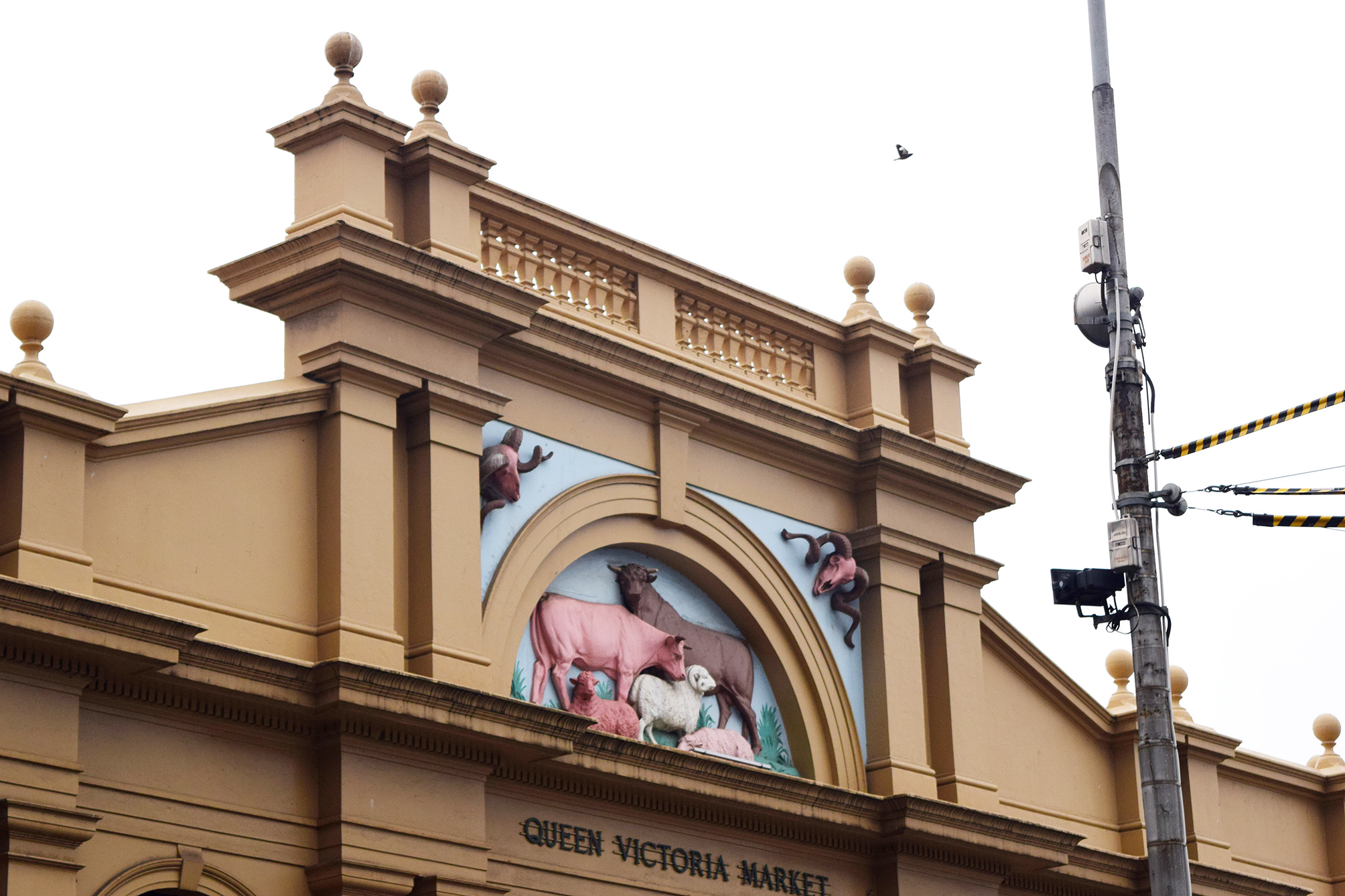By Elizabeth Pillidge | @e_pillidge
Photography by Sarah Loo
Take a walk down Swanston Street. You may not realise it, but you’re actually walking through layers of history. A road that once carried horse-drawn carts and foot traffic is now ventured by rush hour traffic, packed trams, and busy cyclists. Here’s the deal – with each new era comes change, and a ghost of what once was begins to take over the façade.
If you’ve ever been a tourist in Melbourne, it’s likely you’ve visited the Queen Victoria Market (or the ‘Vic Market’, as it’s affectionately known). It’s been there since the nineteenth century – a central hub of sights, smells, and stall holders.
Perhaps you’ve heard news about an announcement for major change to take place at this significant site. If you haven’t, here’s the gist: Mayor Robert Doyle recently gave the green light for an underground car park and an apartment block to be built smack bang next to the market. The $50 million plan will involve temporarily dismantling the site’s heritage sheds to allow for construction, as well as replacing the sheds’ fresh produce stalls with food venues and takeaways.
As you can imagine, some Melburnians are for the change, and others are against. While the Council’s point of view is that they can’t afford to do nothing to the site, many can’t understand why. History tells us that in 1964, The City of Melbourne attempted to implement a plan for the Vic Market involving a 1200 space car park. It was set to turn the famous site into a trade centre and hotel complex. But the proposal was knocked back, as it was met with scorching public outcry.
The idea of preserving a livelihood at the market is still felt by people who work there today. Fiona, a delicatessen-holder, has been trading at the Vic Market for fifteen years. She completely understands the connection people have with the site. “Once you’re here, you love it. It comes under your skin. It becomes part of who you are.”
She says that although “things need to change to revive the market,” there remains the unanswered question of whether the temporary site will be big enough for all the current traders to set up shop. “I don’t think it’s going to be big enough to house everyone… so what does it mean for their families?”
This isn’t just a matter of redeveloping a site; there are so many other things at stake. As Fiona puts it, whenever any kind of change is coming, you don’t really know whether it’s going to be an improvement or a downgrade until it happens. Psychologically speaking, when a familiar space undergoes transformation, it often affects our being as it becomes harder for us to draw an emotional connection to the area.
Former architect of the Antarctica Group, Benjamin Clements, states that since humans are “spatial, sentimental and habitual beings,” redevelopment of spaces can be “quite a traumatic experience.”
“We feel a sense that part of our being exists within the built environment around us… even the smallest change to a layout or decorations in your home can drastically alter your sense of ease.” Perhaps the reason certain buildings are marked as ‘heritage-listed’ is not only to preserve a valuable piece of history, but also a sense of sentimentality and comfort.
From a trader’s perspective, it’s this unique character about a place that keeps people coming back. Concerned about the market losing its character, an anonymous vendor mentioned that “if it’s less unique, there’s less reason to come here.” He said it’s the people that come weekly who keep the trade going. If the regulars are lost, you have to question what the future of the market looks like.
Although there’s a ubiquitous ambiguity around this redevelopment, not everyone is sceptical of the change. Sandra del Greco, a regular shopper at the Vic Market, is certain that the market’s atmosphere can still be preserved if the right people are put to the task. “If it’s good people doing the job, character does not have to be lost,” she says, as we sit in the food court surrounded by hyperkinetic shoppers.
A real concern for customers at the Vic Market is increase in prices as a result of the change. Sandra, who’s been visiting the markets for three years, says “if the traders are gonna have to pay a lot more money for their space, they’re going to charge a lot more money for their food.” She has a point. After the Prahran Market underwent refurbishment, traders were charged more, meaning the price of produce went up.
Markets aside, layers of history can be seen everywhere in Melbourne. Architectural remnants of the past are practically a signature of this city; a heritage-listed shot tower sits among a bustle of citizens now using the centre as a transport hub and commercial metropolis, skaters perform tricks using fragments of the old State Library mounded into the footpath, a student walking through RMIT’s campus passes an old gaol that once housed Ned Kelly – at least until they tread around a construction site for a new metro tunnel.
Although change can usually be for the better, there’s often something that gets lost along the way. To this point, Melbourne has done a great job of ensuring that doesn’t happen; here’s hoping that continues.





